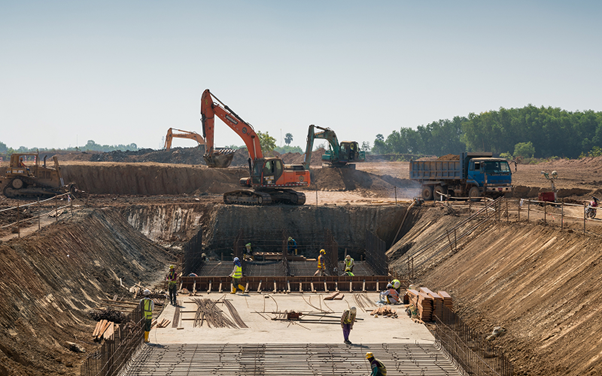The construction industry is crucial in shaping the built environment, but it also contributes significantly to carbon emissions, energy consumption, and resource depletion. As awareness of climate change and sustainability grows, there is a stronger push towards adopting sustainable construction methods that minimise environmental harm. By utilising eco-friendly materials, efficient building processes, and innovative technologies, developers and contractors can reduce the industry’s footprint. Sustainable construction also supports long-term cost savings, improved building performance, and healthier spaces for occupants.
The Principles of Sustainable Construction
Sustainable construction focuses on designing and building in ways that protect natural resources while ensuring functionality and comfort, including selecting environmentally responsible materials, minimising energy usage, and reducing waste during construction. Practices such as recycling building materials, incorporating renewable energy systems, and improving insulation contribute to more sustainable outcomes. The goal is to create buildings that last longer, perform better, and demand fewer resources over their lifecycle.
Another key principle is the use of materials that balance durability with environmental responsibility. Resilient flooring, for example, has become a popular choice because it combines long-lasting performance with eco-friendly manufacturing practices. By opting for materials like these, builders extend the lifespan of interior finishes while reducing the need for frequent replacements, which cuts down on waste and resource consumption.
Reducing Carbon Emissions Through Design
One of the most significant ways sustainable construction reduces environmental impact is by lowering carbon emissions. Buildings designed with energy-efficient systems, such as LED lighting, smart HVAC, and renewable energy sources, significantly decrease energy demand. Better insulation and thoughtful orientation also help regulate indoor temperatures naturally, lowering the reliance on artificial heating and cooling.
Incorporating resilient flooring further supports emission reduction, as many modern flooring solutions are made using recycled materials and manufactured with low-emission processes. Since flooring covers large surface areas, choosing sustainable options can make a meaningful difference to a building’s overall environmental footprint. These decisions, when combined, align with green building standards and help reduce the industry’s contribution to climate change.
Waste Reduction and Resource Efficiency
Construction generates a large amount of waste, much of which ends up in landfills. Sustainable construction tackles this problem by encouraging practices such as prefabrication, modular building, and on-site recycling. These methods ensure materials are used more efficiently and reduce the volume of discarded waste. For example, contractors may reuse concrete, steel, or wood in future projects, extending the lifecycle of valuable resources.
Resilient flooring contributes to resource efficiency because it is designed to withstand heavy use over long periods. Unlike traditional materials that wear out quickly, it offers durability that delays replacement needs. Many types are also recyclable at the end of their lifecycle, ensuring they do not add to landfill waste, which demonstrates how smart material choices directly support waste reduction in sustainable construction.
Benefits of Sustainable Construction
Sustainable construction delivers a range of advantages that go beyond reducing environmental impact. Businesses benefit from lower operating costs due to energy and water savings, while also ensuring compliance with regulations and alignment with established green building standards. These improvements create buildings that are more efficient, cost-effective, and environmentally responsible in the long term.
Beyond efficiency, sustainable construction also enhances the human experience within buildings. Occupants enjoy better air quality and healthier spaces thanks to eco-friendly materials and improved design practices. Developers who adopt these methods strengthen their reputation by demonstrating environmental responsibility, while durable materials such as resilient flooring extend the lifespan of projects. These combined benefits make sustainable construction both a practical and socially valuable approach.
Conclusion
Sustainable construction practices offer practical solutions to reduce the environmental impact of building projects. By embracing efficient design, eco-friendly materials such as resilient flooring, and waste-reduction strategies, developers can lower carbon emissions and conserve valuable resources. Beyond environmental gains, sustainable construction delivers long-term savings, healthier spaces, and enhanced brand reputation.
Take the next step towards eco-friendly building. Contact Mapei Far East today and explore sustainable construction solutions that make a lasting impact.

